New Delhi: Nearly 300 people, a mix of migrant labourers and patients from AIIMS and Safdarjung hospital, are currently being housed at a quarantine facility in New Delhi’s Chhatarpur.
The facility can accommodate around 2,000 people and is divided into three areas — one section for patients, one section for the migrant workers and one that is used as an isolation ward.
Orange tags denote the migrant workers while pink tags denote the others.
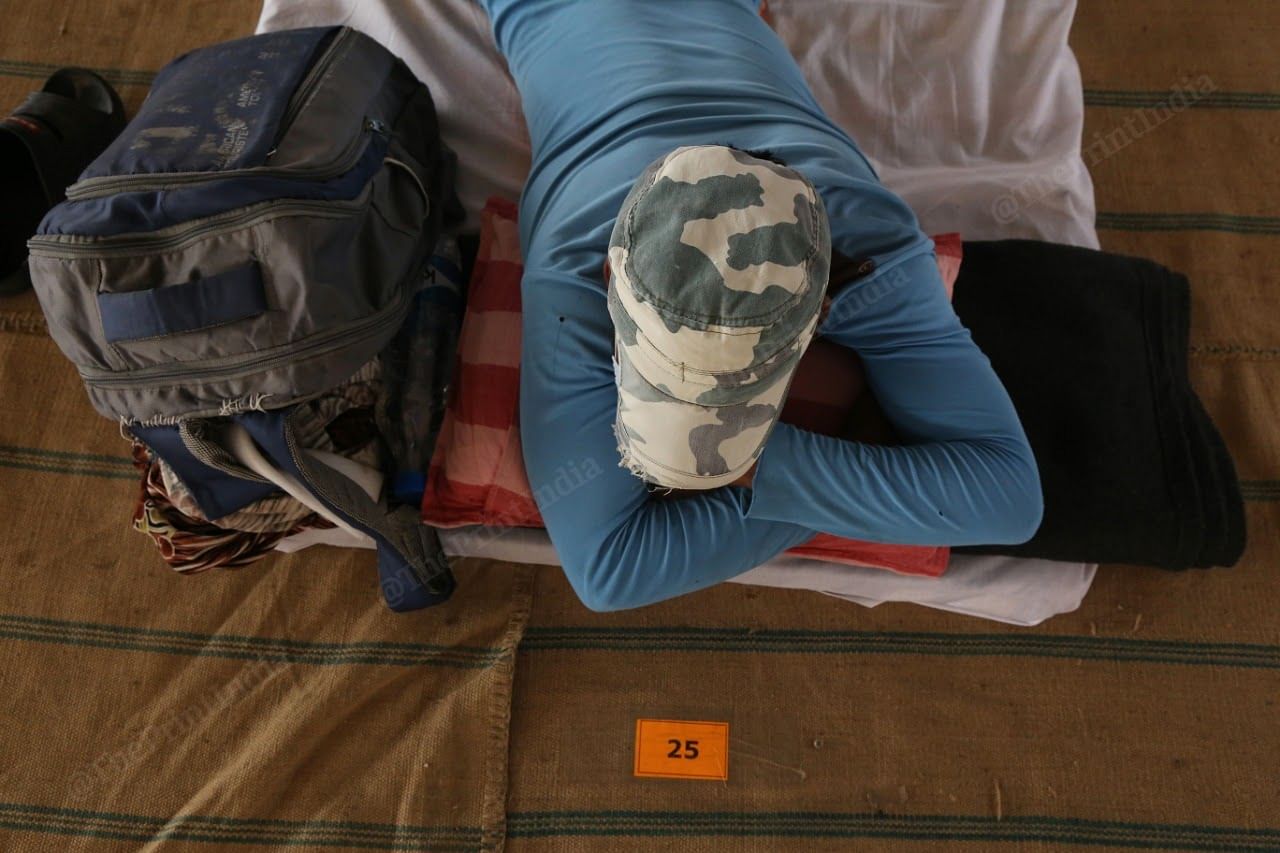
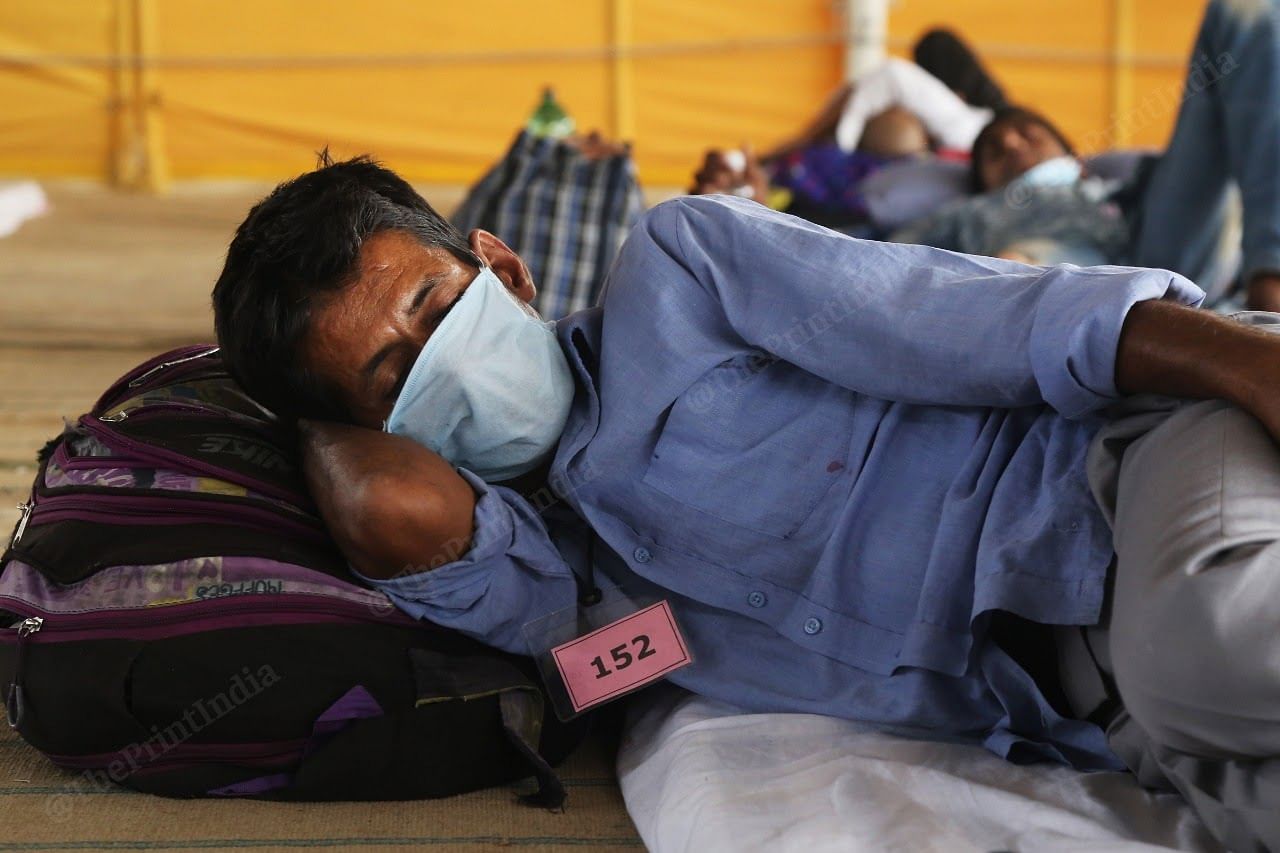
Everyone at the quarantine facility receive three meals a day, and are regularly checked by doctors. Each section has a television fitted in it, and Ramayan can often be seen playing on it.

On the face of it, it seems a reasonable situation given the circumstances. However, those at the facility, which opened on 30 March, have differing responses to this. For some, the shelter is sufficient, for others, it’s the wait for things to normalise that is excruciating.
Stuck away from home
Among the migrants are 16 families from Jhansi, Uttar Pradesh. Due to the lockdown, these families have been unable to leave the quarantine home. The families had come to Delhi on 18 March to work as labourers. Soon after, the lockdown was imposed and the borders sealed, stranding them here.
When they tried to leave, they were stopped by police near Nehru Place and brought to the quarantine facility.
All of them are now clear of being coronavirus carriers, but that hasn’t brought them closer to going back home.
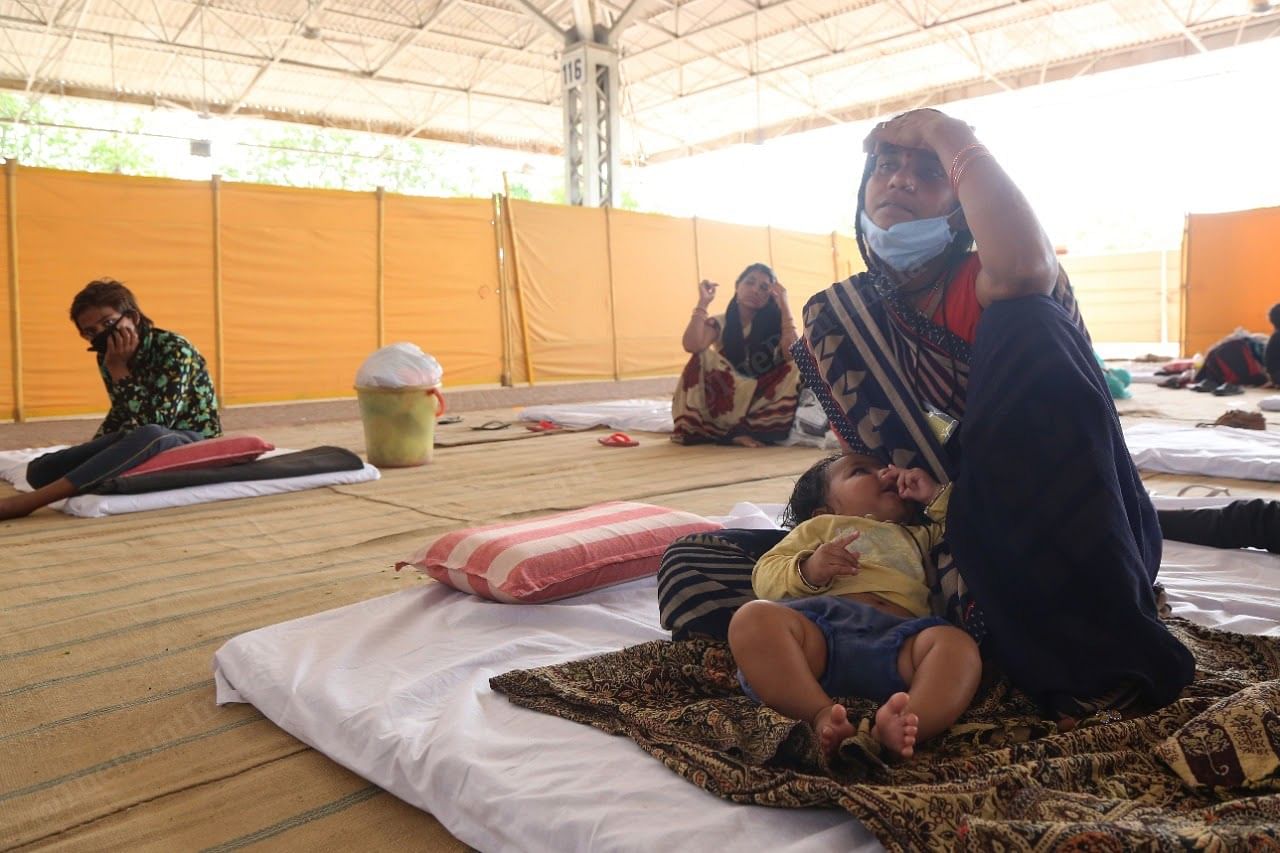
Kiran, who came with her husband and two children, misses her other three children who are back at her village. “Everything is fine here, but we want to go back to our village. I miss my children,” she tells ThePrint.
Like Kiran, Sanjith Basari and wife Rani cannot wait to be reunited with their two children.
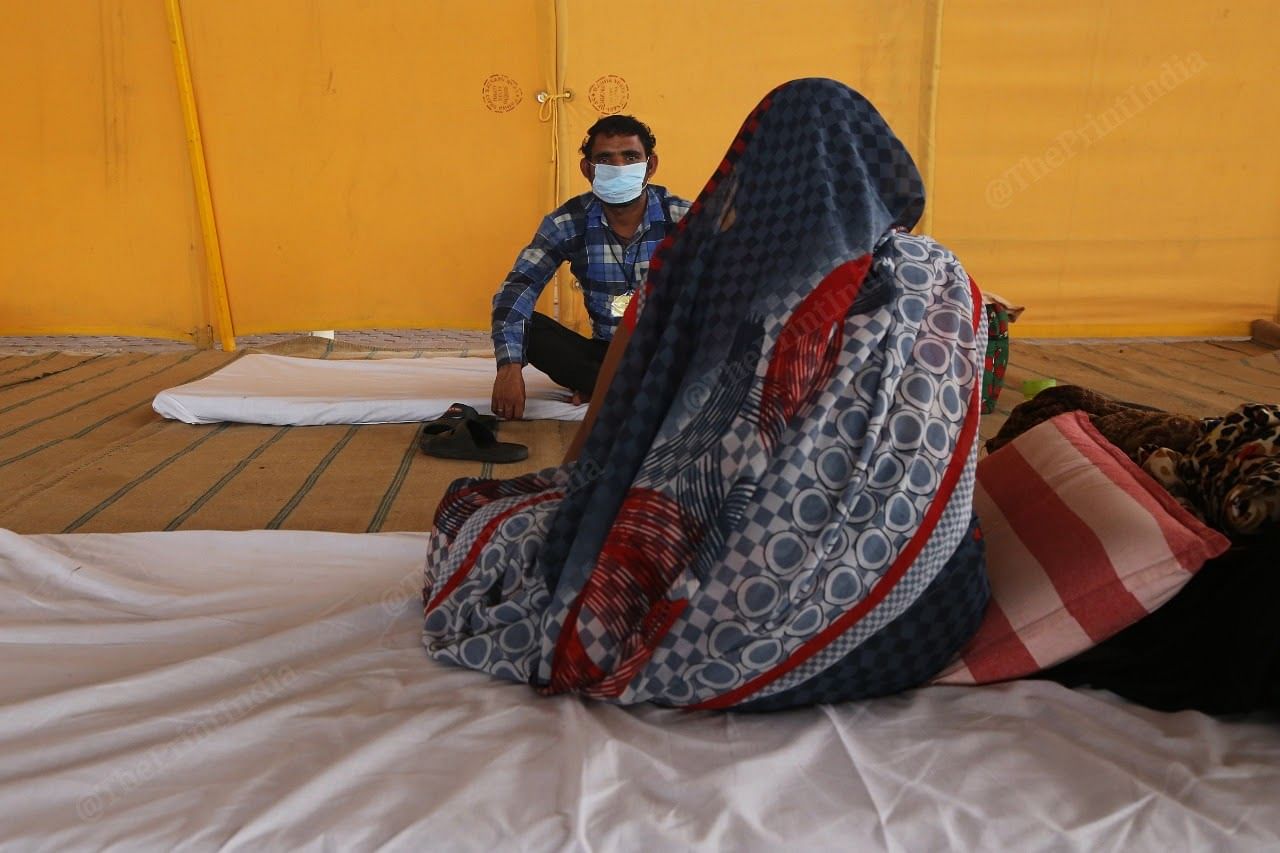
For others, the separation from family has become a permanent fact in life. Halki Bahu and her sister Aarti, who come from Madhya Pradesh, were at the quarantine facility when their mother passed away in their village. She was old, they say with a sense of acceptance, but add they are sad they “could not meet her for the last time”.
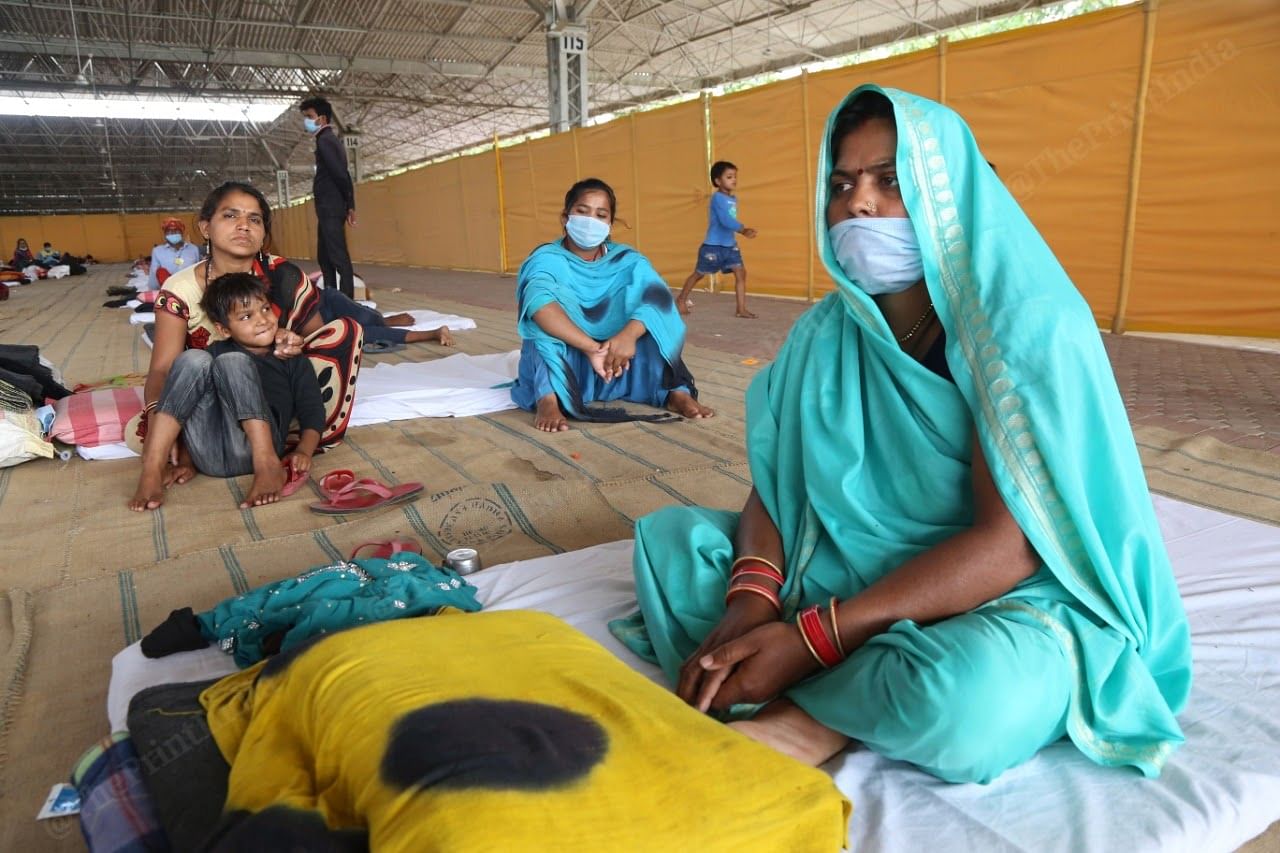
With nowhere to go, and not much to do, many of them can be seen sitting around listlessly, or sleeping or playing on their mobile phones. Sometimes, they take a stroll outside.
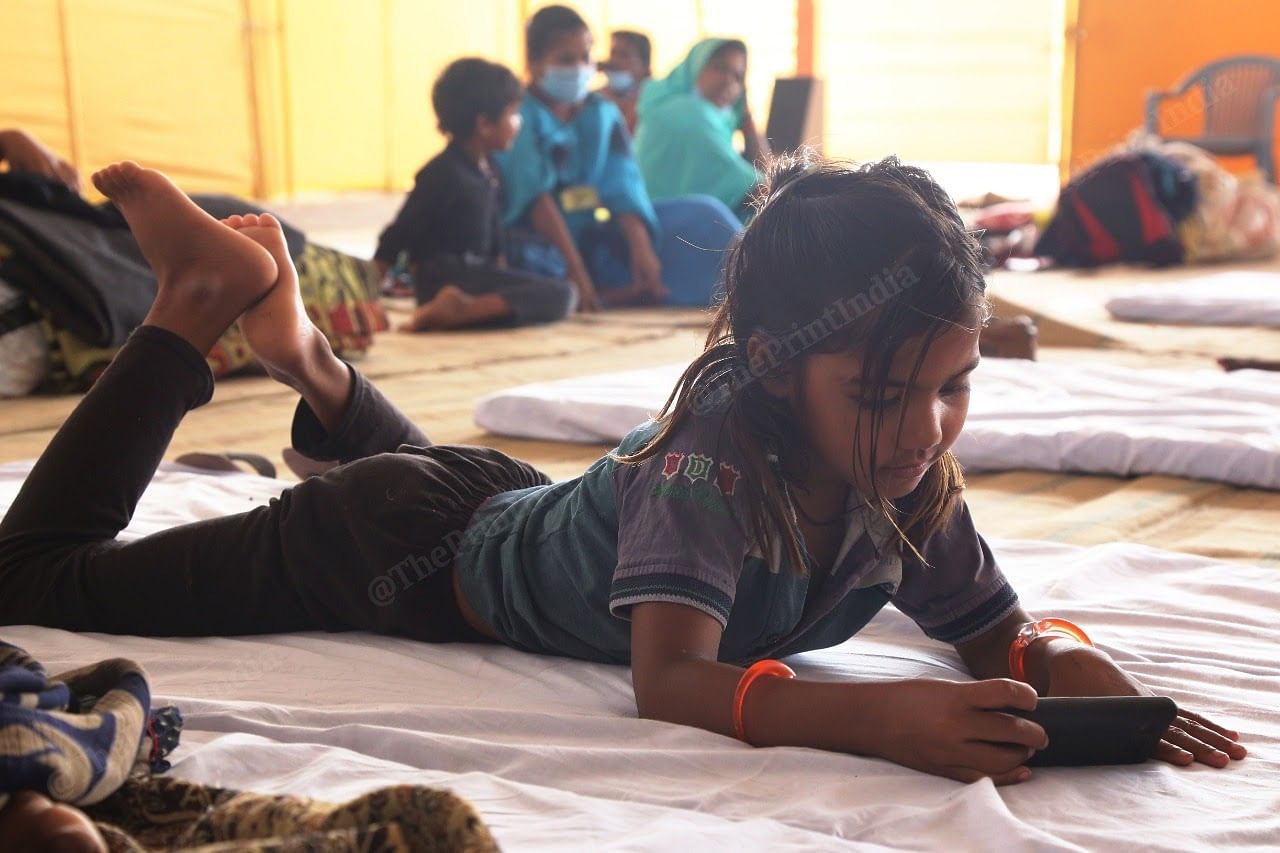
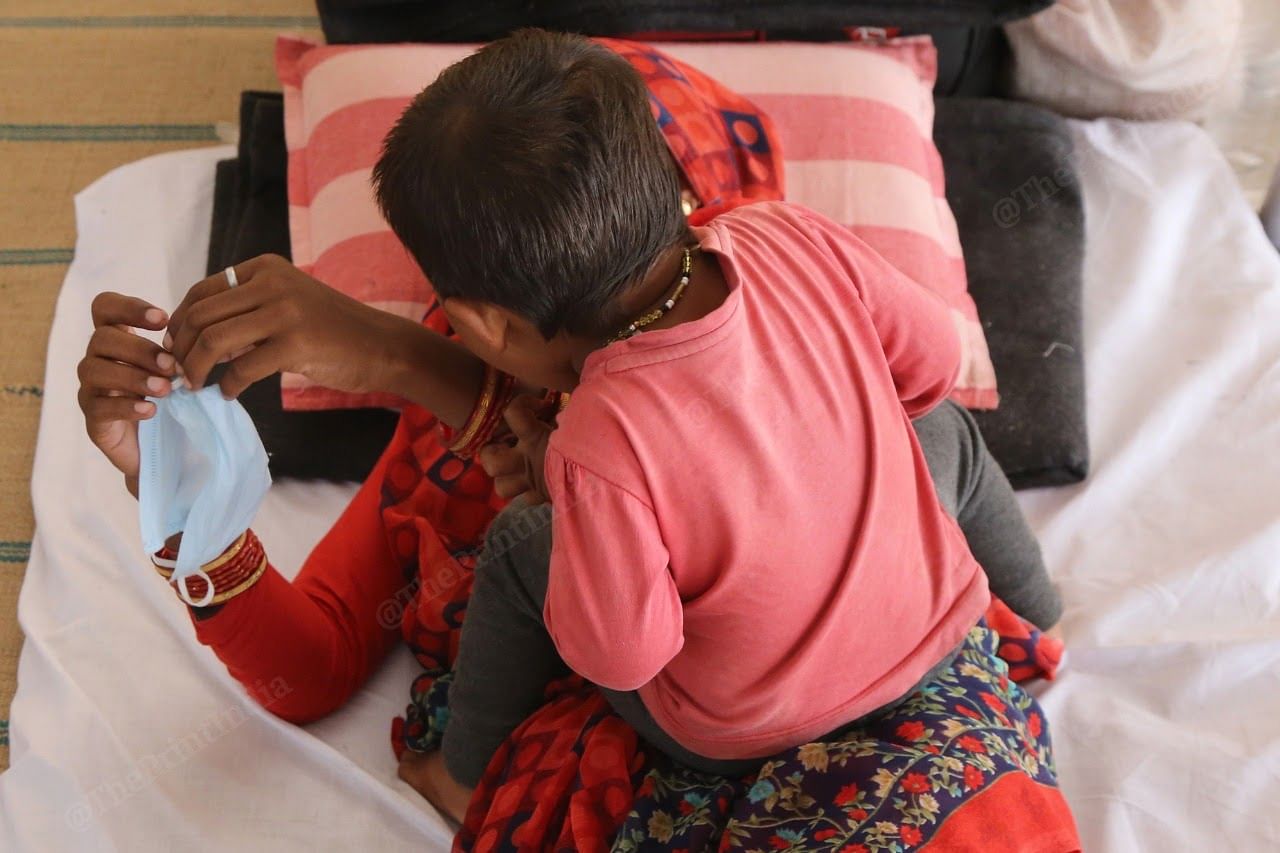
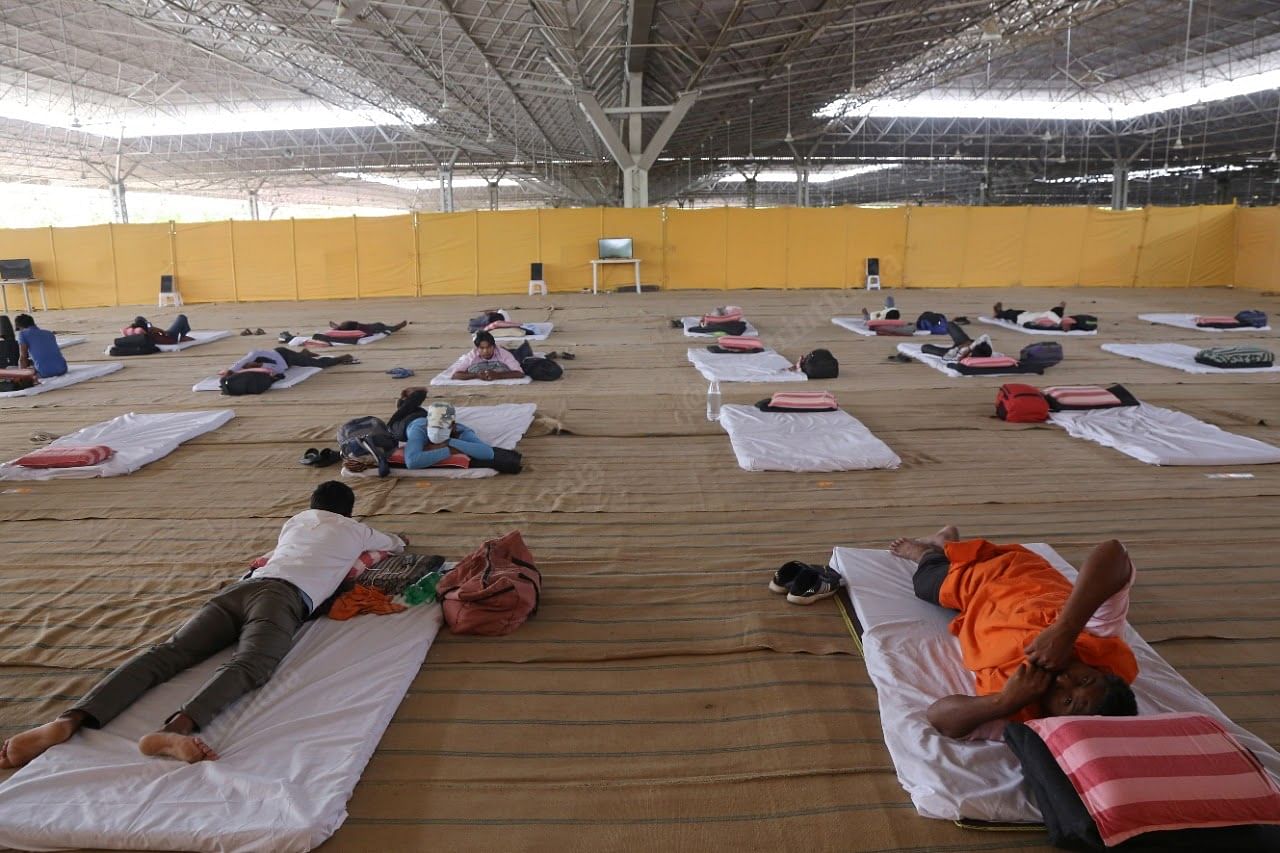
Rescued from the streets, but in need of medical aid
The facility also houses patients from AIIMS and Safdarjung hospitals who were discharged from the hospitals in the immediate aftermath of the lockdown to avoid the spread of the infection. Like the migrant workers, they also found themselves locked in Delhi due to the lockdown. Unable to continue their treatment at the hospital, they now wait at quarantine facilities, like the one in Chhatarpur, to go back home.
Most of these patients are severely ill and are in need of treatment. They require medicines, injections, and other essential supplies every day.
Anjani and Mordhwaj Khushwaha came to AIIMS for their three-year-old daughter Anushka, who is a cancer patient. The family travelled with a lot of luggage, including a suction apparatus that helps their daughter breathe easily. “She needs an injection everyday, but today we missed it because we could not reach the hospital,” Anjani said.
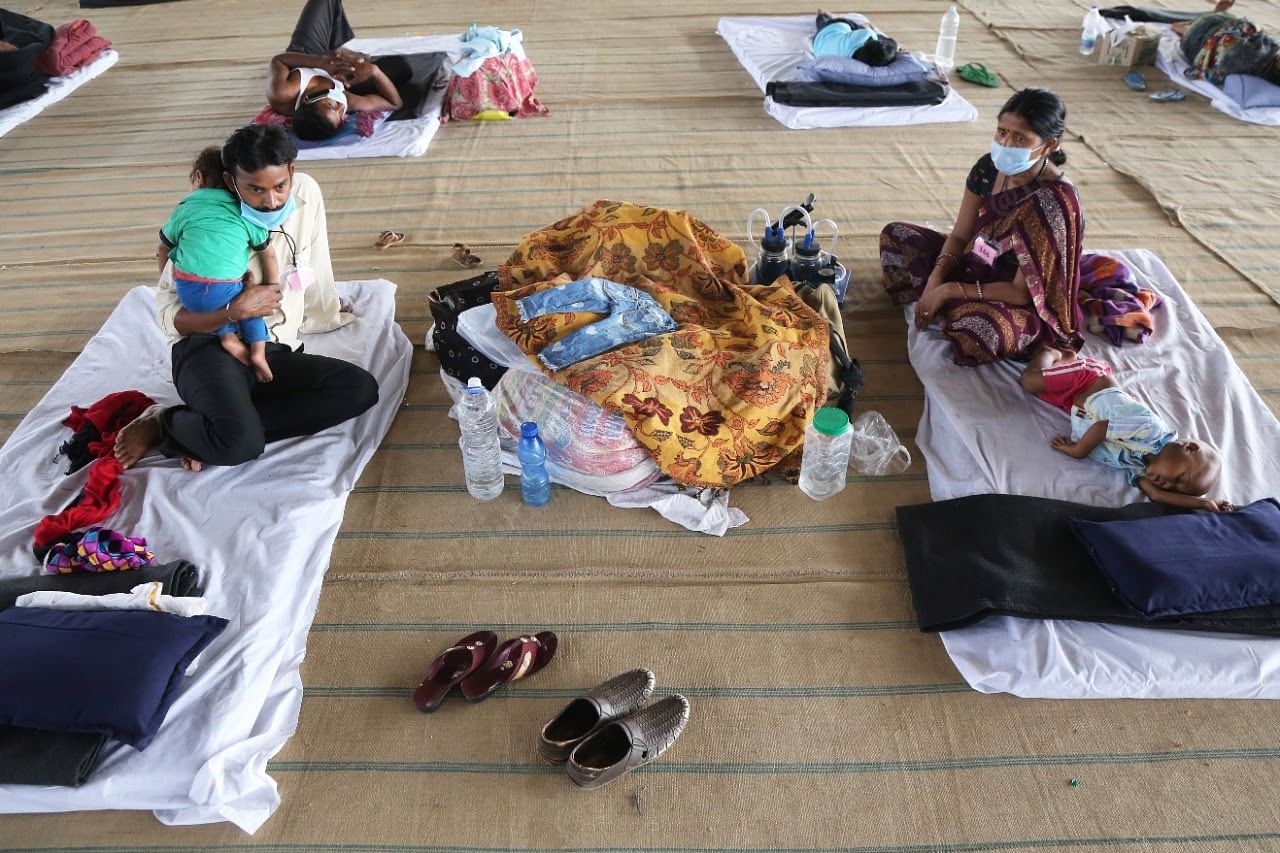
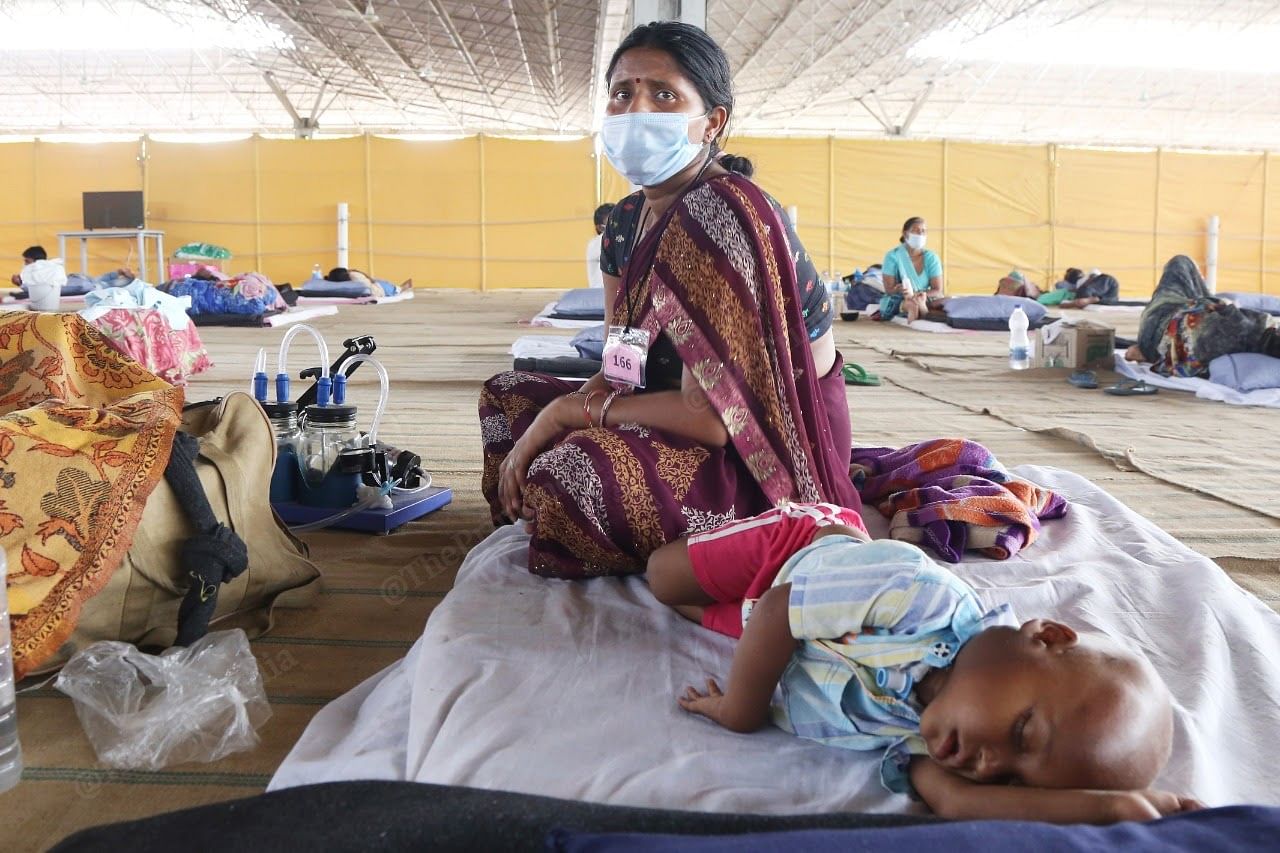
Anushka isn’t the only cancer patient around; so is 13-year-old Manisha Kumari. She and her father had come to Delhi around a month ago. Doctors at the quarantine facility referred her case to the hospital since her condition is critical. She was eventually admitted again.
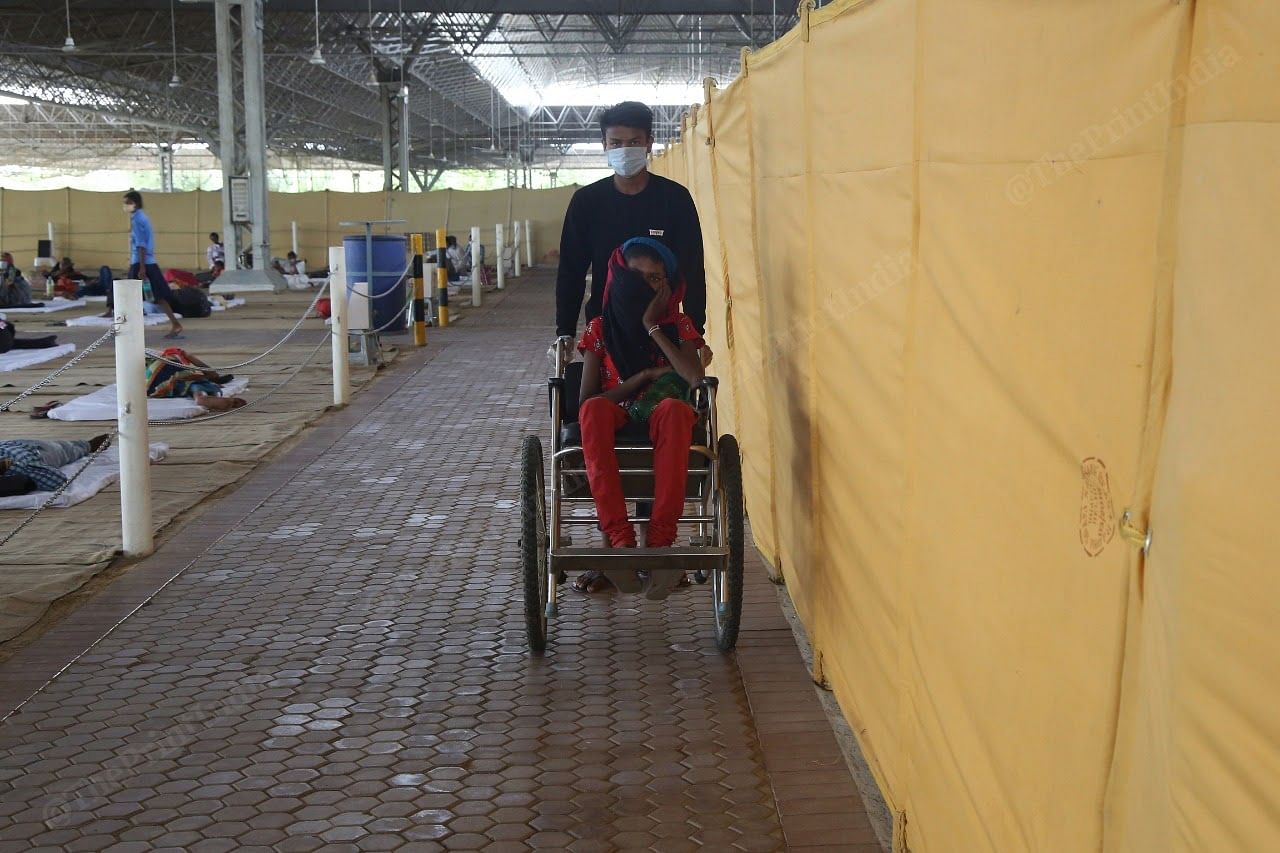
Doctors conducting medical check ups refer critical cases to hospitals so patients may receive better treatment.
Most of the patients are among those rescued by the Delhi government from the subway near AIIMS where they had taken shelter after the hospital had discharged them.
Sixty-year-old Ilawati, who was in Safdarjung hospital, was also living on the subway. She hobbles around with the help of a walking stick as she waits for her wounds to heal.
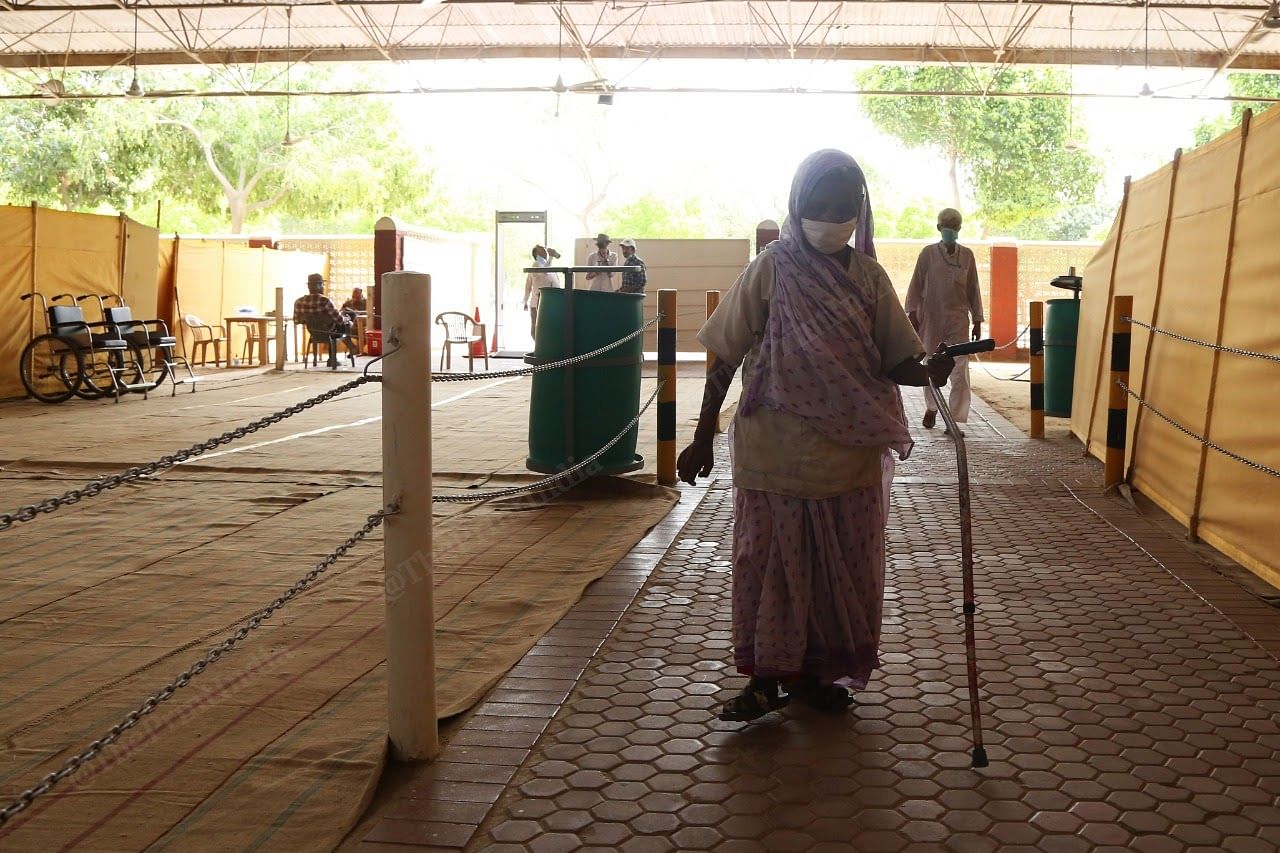
The government also brought along homeless people living on the subway when they rescued the patients.
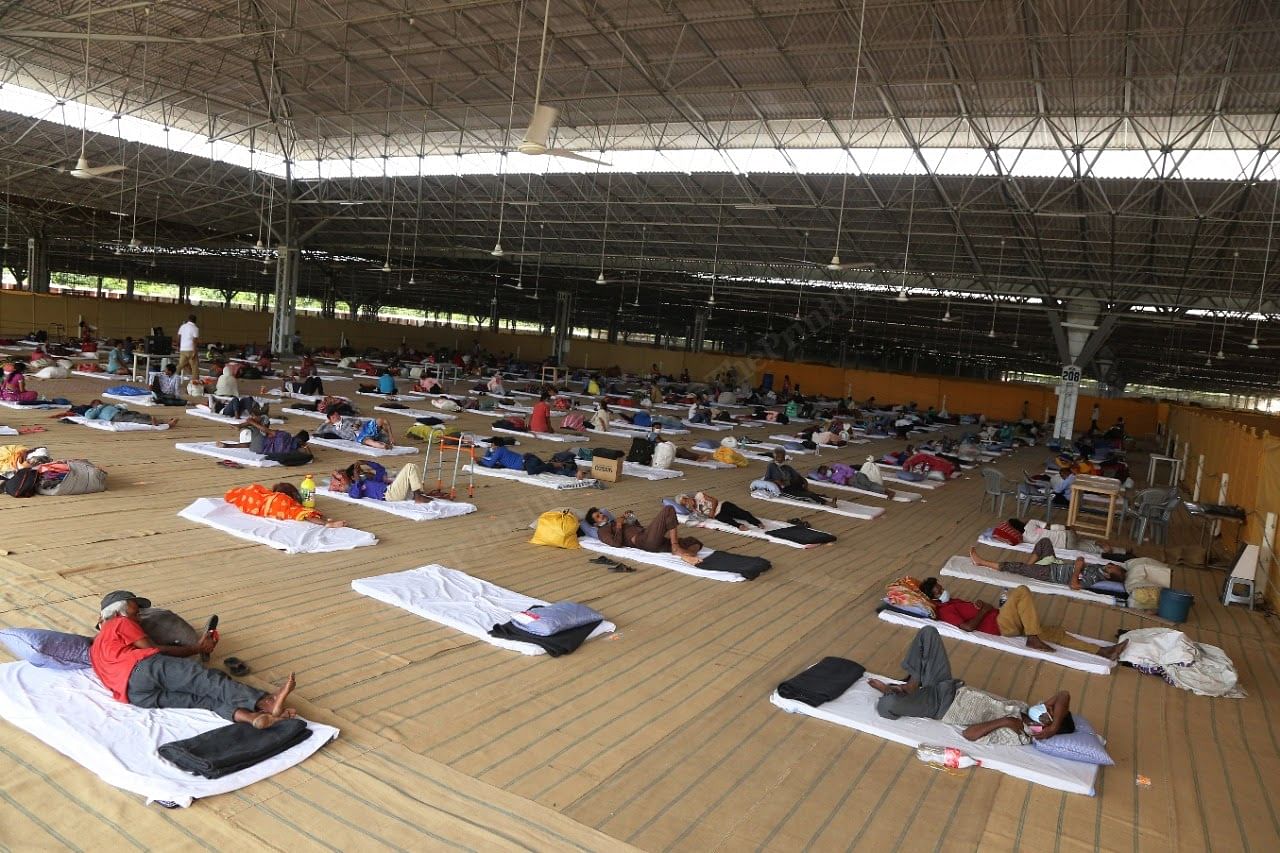



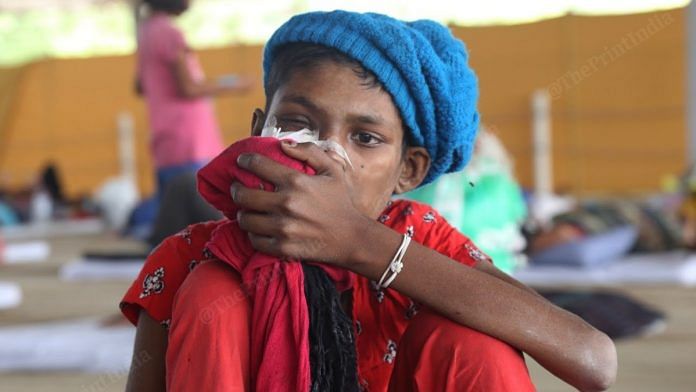



May the almighty shows his compassion to humans. It’s high time God has to bless his subjects.
Telangana gov should implement these kind of program in Hyderabad…………….